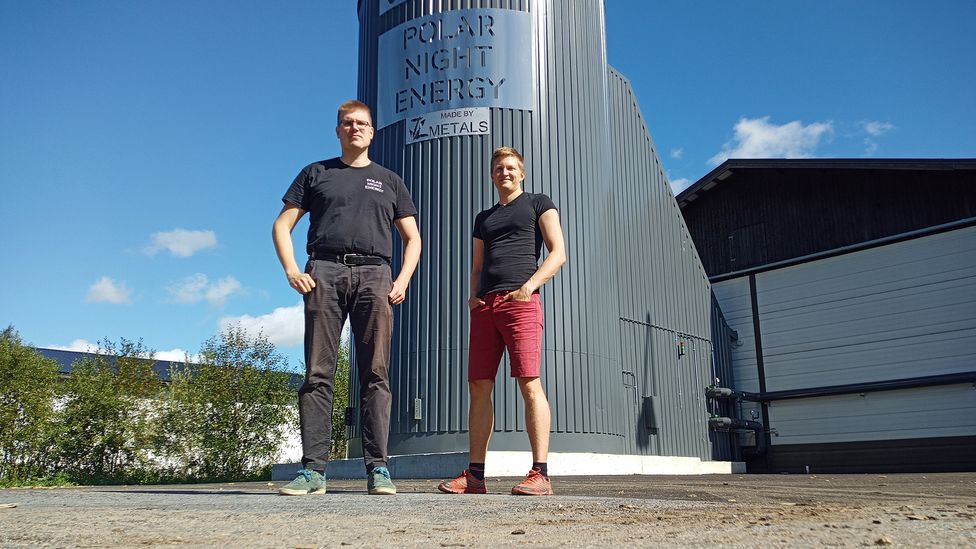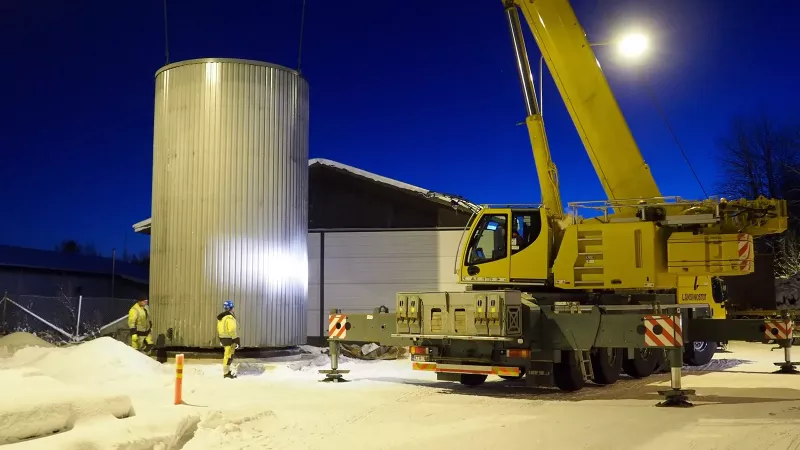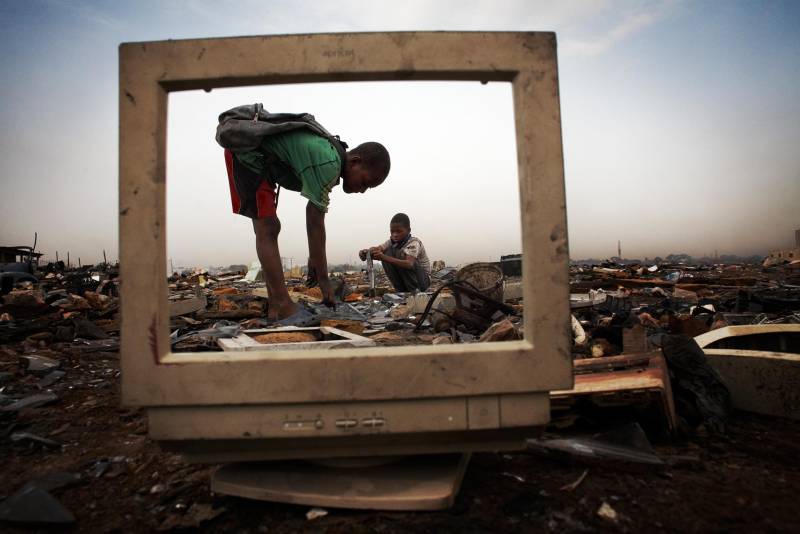A new way of storing renewable energy is providing clean heat through the long Nordic nights. At the end of a winding, tree-lined country road in western Finland, four young engineers believe they have a possible answer to one of the green energy's biggest challenges.
The challenge is how to provide a year-round, steady power supply from renewable energy during changing seasons and variable weather conditions. The answer nestling in Vatajankoski power plant, 270 km (168 miles) northwest of Finland's capital, Helsinki, is remarkably simple, abundant and cheap: sand.
The Vatajankoski power plant is home to the world's first commercial-scale sand battery. Fully enclosed in a 7m (23ft)-high steel container, the battery consists of 100 tonnes of low-grade builders' sand, two district heating pipes, and a fan. The sand becomes a battery after it is heated up to 600C using electricity generated by wind turbines and solar panels in Finland, brought by Vatajankoski, the owners of the power plant.
The renewable energy powers a resistance heater which heats up the air inside the sand. Inside the battery, this hot air is circulated by a fan around the sand through heat exchange pipes.
Thick insulation surrounds the sand, keeping the temperature inside the battery at 600C (1,112F), even when it is freezing outside. "We don't want to lose any heat; the average winter temperature is below 0C (32F) in Kankanpää," says Ville Kivioja, lead scientist at Polar Night Energy, who monitors the battery's performance online.

The battery stores 8 MWh of thermal energy when full. When energy demand rises, the battery discharges about 200 kW of power through the heat-exchange pipes: that's enough to provide heating and hot water for about 100 homes and a public swimming pool in Kankaanpää, supplementing power from the grid. The battery is charged overnight when the electricity prices are lower.
It's a low-maintenance system, says Kivioja. The company uses cheap, low-quality sand that's been rejected by builders instead of high quality river-sand which is used in vast quantities for construction, leading to a global shortage.
"There's no wear and tear involved with the [heat exchange] pipes and the sand. The fan is the only moving part and it's easy to replace if necessary," says Kivioja.
Sand is a very effective medium for retaining heat over a long period, storing power for months at a time. And there are other benefits too. "The sand has a very long lifetime: it can heat up and cool off any number of times," says Kivioja. "It will get denser after a while so needs less space. At that point we can add more sand."
The four young Finnish engineers who invented this sand battery go back a long way. Tommi Eronen, Markku Ylönen, Liisa Naskali and Ville Kivioja bonded as children over a shared passion for athletics. The sprinter, cyclist, triple jumper and discus thrower belonged to the same club in Tampere, southern Finland, cheering each other on at track and field events during their teenage years.
While reading an article about traditional Finnish fireplaces, made from stone and sand, Eronen had a lightbulb moment
As they entered their twenties, their interests turned from sport to science. Shorter and warmer winters in the south of Finland sparked a shared motivation to tackle climate change.
"The number of days of ice cover on Näsijärvi, the lake where we used to skate as children, has decreased dramatically in the last few years. Climate change is happening in front of our eyes," says Eronen.
In 2016, while doing research for his engineering Master's degree, Eronen was looking into water-based storage systems for renewable energy. But while reading an article about traditional Finnish fireplaces, made from stone and sand, Eronen had a lightbulb moment.
"It got me thinking: would a solid material, rather than water, be more suitable for storing solar and wind energy?" Eronen says.
Together with Ylönen, he started developing the sand battery prototype. Having successfully tested their pilot battery in Eronen's grandfather's garden near Tampere, the pair recruited their childhood friends from the athletics club to start Polar Night Energy. In July, they installed the first commercial sand battery at the Vatajankoski power plant in Kankaanpää.
Storing green energy
The innovation has generated a flurry of excitement around the globe. "My phone is constantly ringing and I have thousands of unread emails," says Eronen.
A small commercial application of a new energy storage system rarely becomes a hot topic, but the sand battery has attracted attention for its potential to even out the power supply from renewable sources (see The search for steady supply box).
Viable storage of solar and wind energy is especially critical for Nordic countries which have long hours of darkness and an increased need for heat in the winter, but extended hours of sunlight in the summer.
In the wake of the Ukraine war, Finland is urging the EU to increase its renewables output. "The only way out of the energy crisis is to invest heavily in renewable and emission-free energy production," Finland's prime minister Sanna Marin said in September.
The sand battery's inventors hope that this is where their solution comes in.
"My first thought was 'why didn’t I think of that?'" laughs Eva Pongrácz, vice-head of the water, energy and environmental engineering research unit at the University of Oulu in northern Finland. "Such a simple, fresh and innovative idea. Could this be the solution for the continuous supply of green energy? I don't think there will be one single answer but this is part of the solution."




